| Landstreet | Chapter 6: Asteroids | Tue Jul 29 10:23:32 2003 |
-
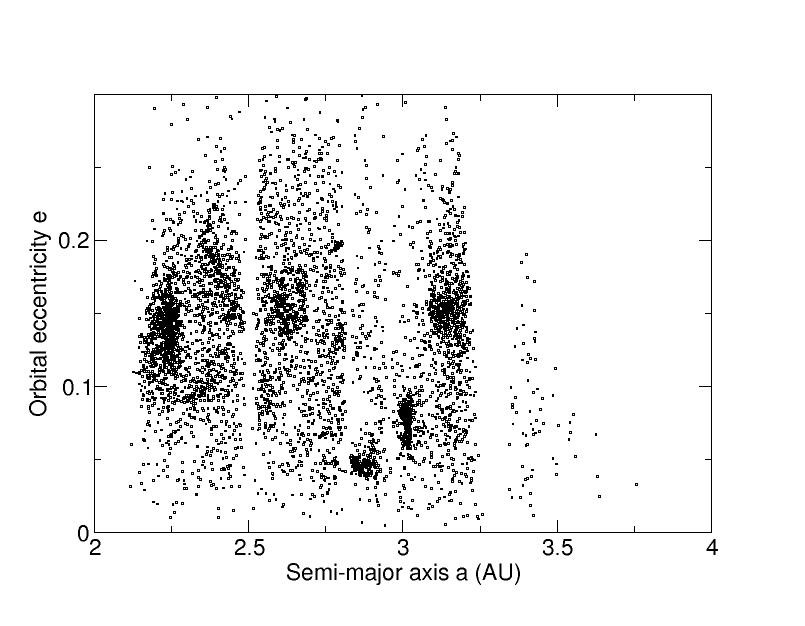 slide1 ==> 6.1: Eccentricities of about 5000 asteroids as a function of orbital period. Note Kirkwood gaps.
slide1 ==> 6.1: Eccentricities of about 5000 asteroids as a function of orbital period. Note Kirkwood gaps.
-
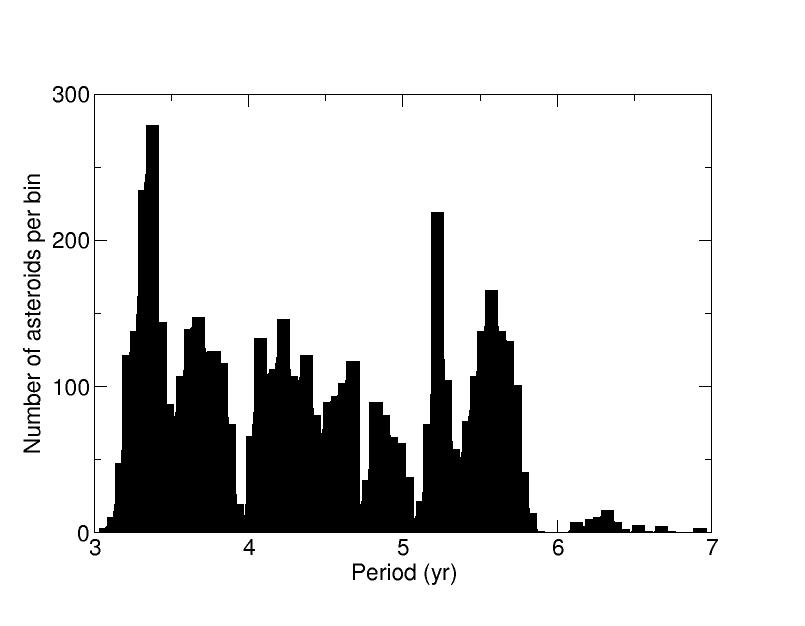 slide2 ==> 6.2: Numbers of asteroids with various orbital periods. Kirkwood gaps are again prominent.
slide2 ==> 6.2: Numbers of asteroids with various orbital periods. Kirkwood gaps are again prominent.
-
 slide3 ==> 6.3: Reflected and radiated energy from reflective (A = 0.20, top) and non-reflective (A=0.05, bottom) asteroids
slide3 ==> 6.3: Reflected and radiated energy from reflective (A = 0.20, top) and non-reflective (A=0.05, bottom) asteroids
-
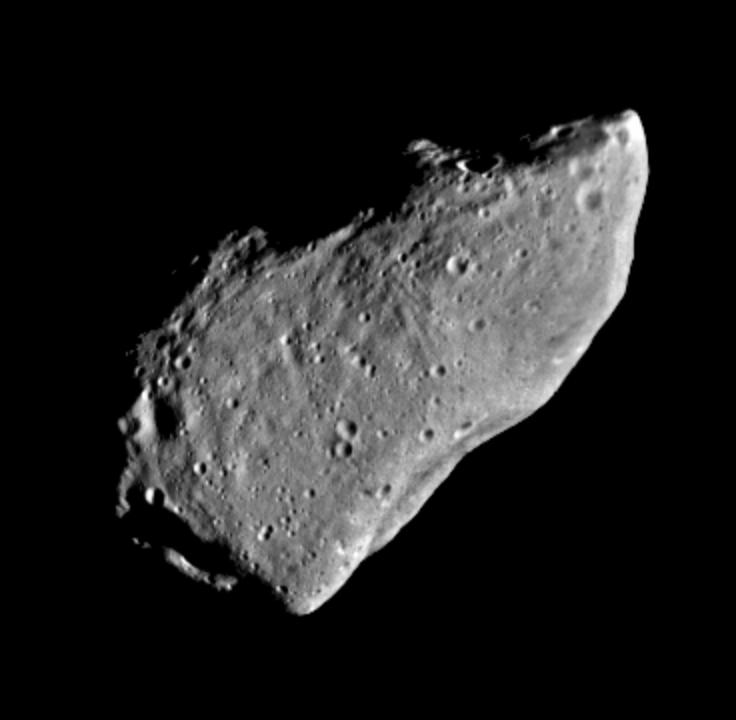 slide4 ==> 6.4: Asteroid Gaspra (19 x 12 x 11 km) as viewed from Galileo probe. Smallest visible features about 100 km across.
slide4 ==> 6.4: Asteroid Gaspra (19 x 12 x 11 km) as viewed from Galileo probe. Smallest visible features about 100 km across.
-
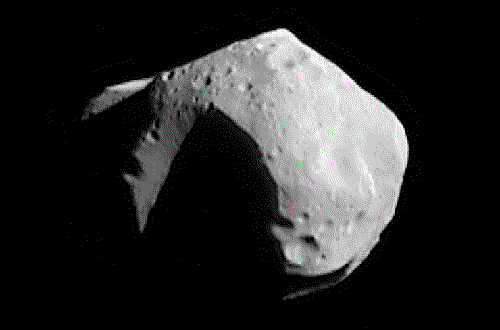 slide5 ==> 6.5: Asteroid Mathilde (about 56 km across), showing its huge crater. The asteroid is a black as coal (A = 0.03).
slide5 ==> 6.5: Asteroid Mathilde (about 56 km across), showing its huge crater. The asteroid is a black as coal (A = 0.03).
-
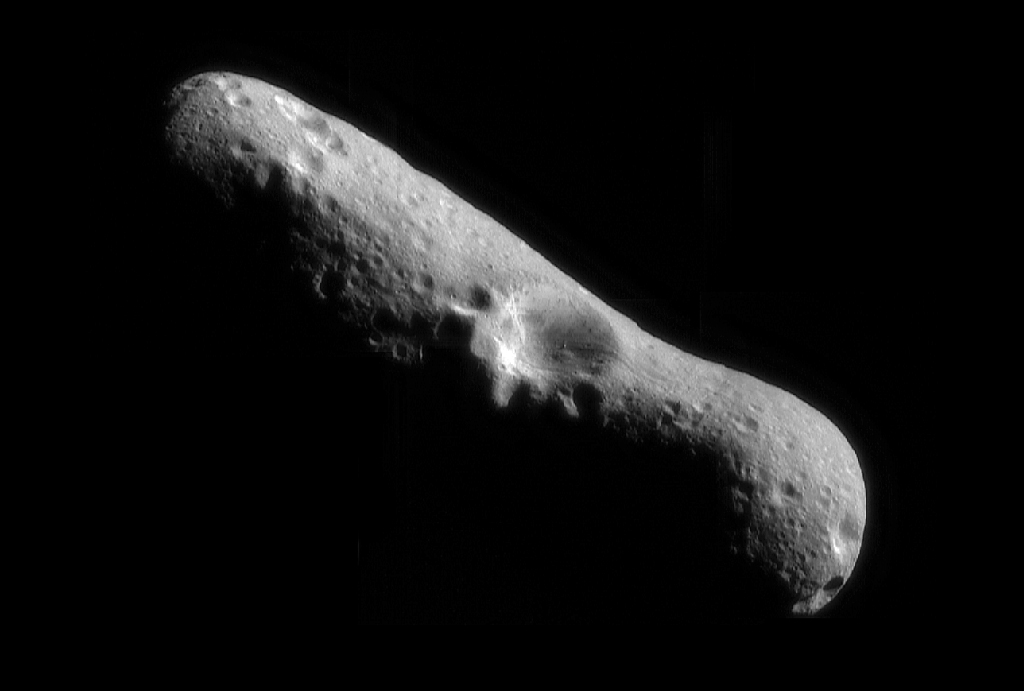 slide6 ==> 6.6: Asteroid Eros, an extremely non-spherical body about 30 km long, viewed from NEAR-SHOEMAKER
slide6 ==> 6.6: Asteroid Eros, an extremely non-spherical body about 30 km long, viewed from NEAR-SHOEMAKER
-
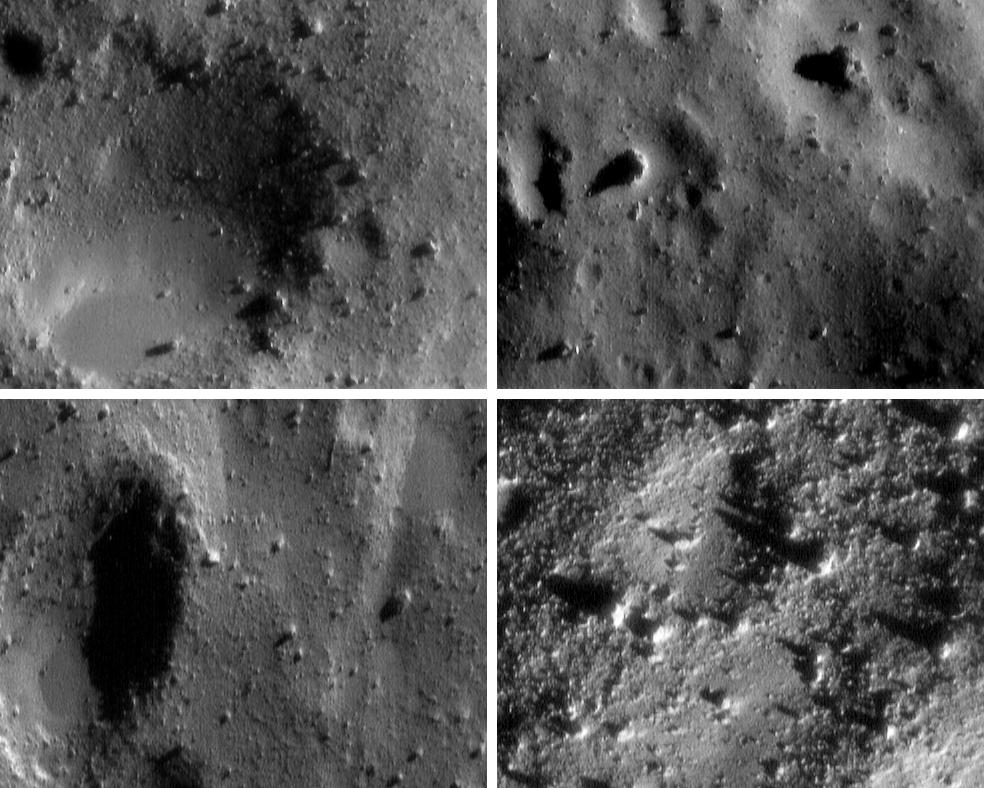 slide7 ==> 6.7: Images as NEAR landed on asteroid Eros. Top two are about 500 m across, bottom about 250 m.
slide7 ==> 6.7: Images as NEAR landed on asteroid Eros. Top two are about 500 m across, bottom about 250 m.
-
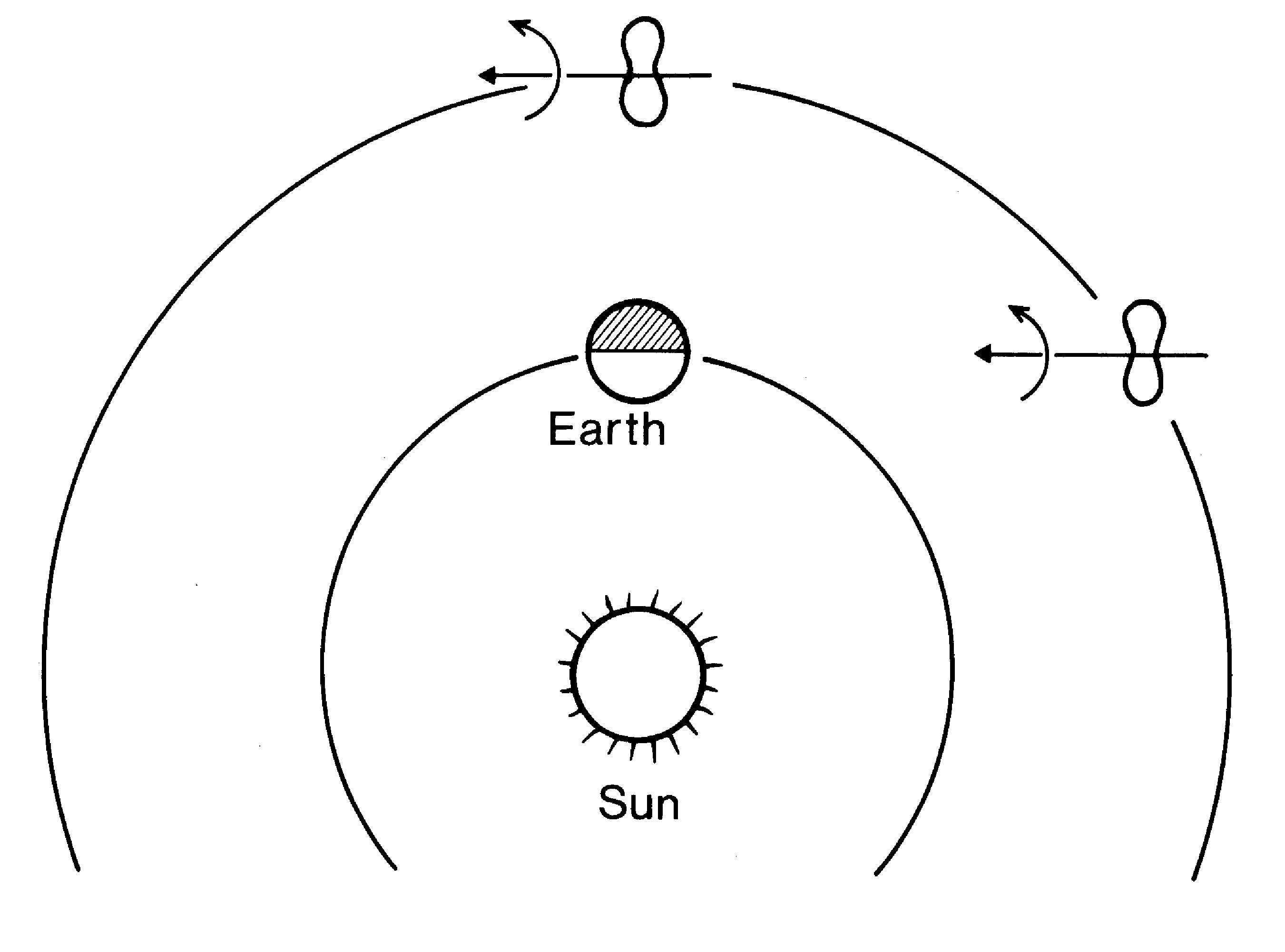 slide8 ==> 6.8: Two views of a rotating asteroid. Seen from the pole it varies little, but from the side big brightness changes are seen.
slide8 ==> 6.8: Two views of a rotating asteroid. Seen from the pole it varies little, but from the side big brightness changes are seen.
-
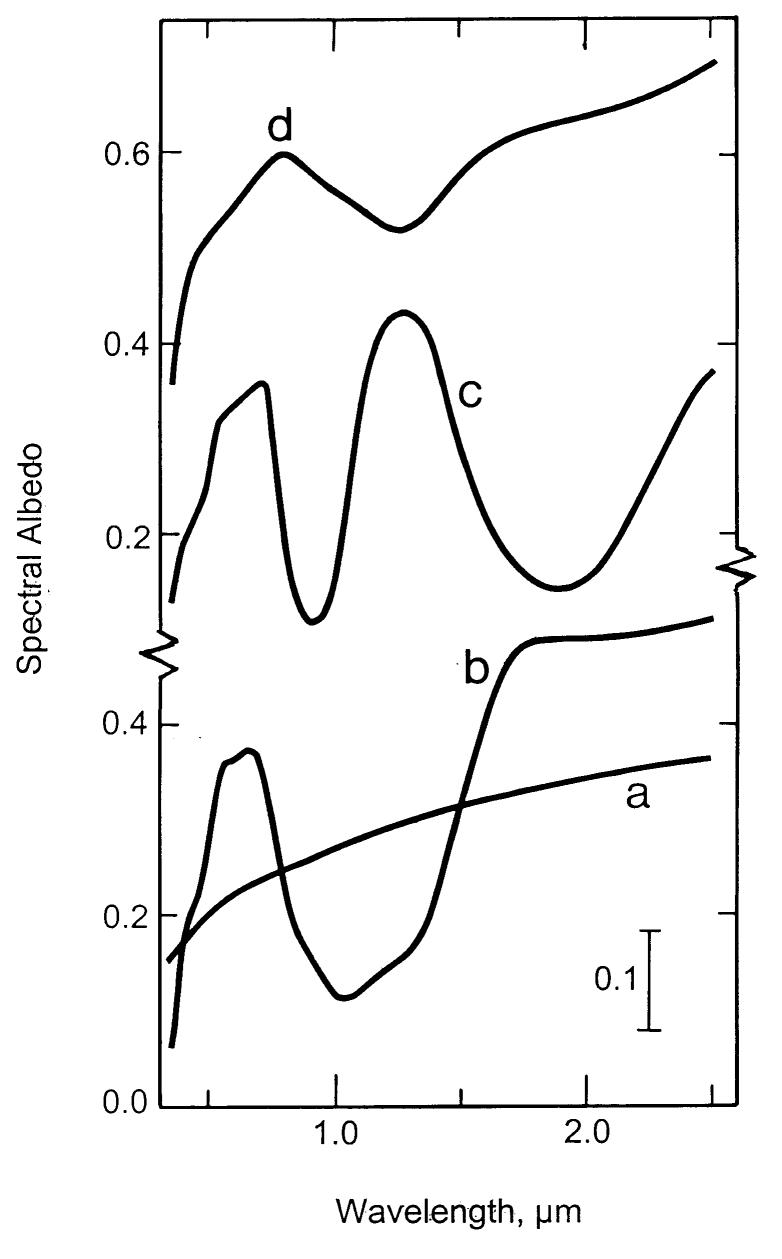 slide9 ==> 6.9: Reflection spectra of a. NiFe, b. olivine, c. pyroxene, and d. anorthite.
slide9 ==> 6.9: Reflection spectra of a. NiFe, b. olivine, c. pyroxene, and d. anorthite.
-
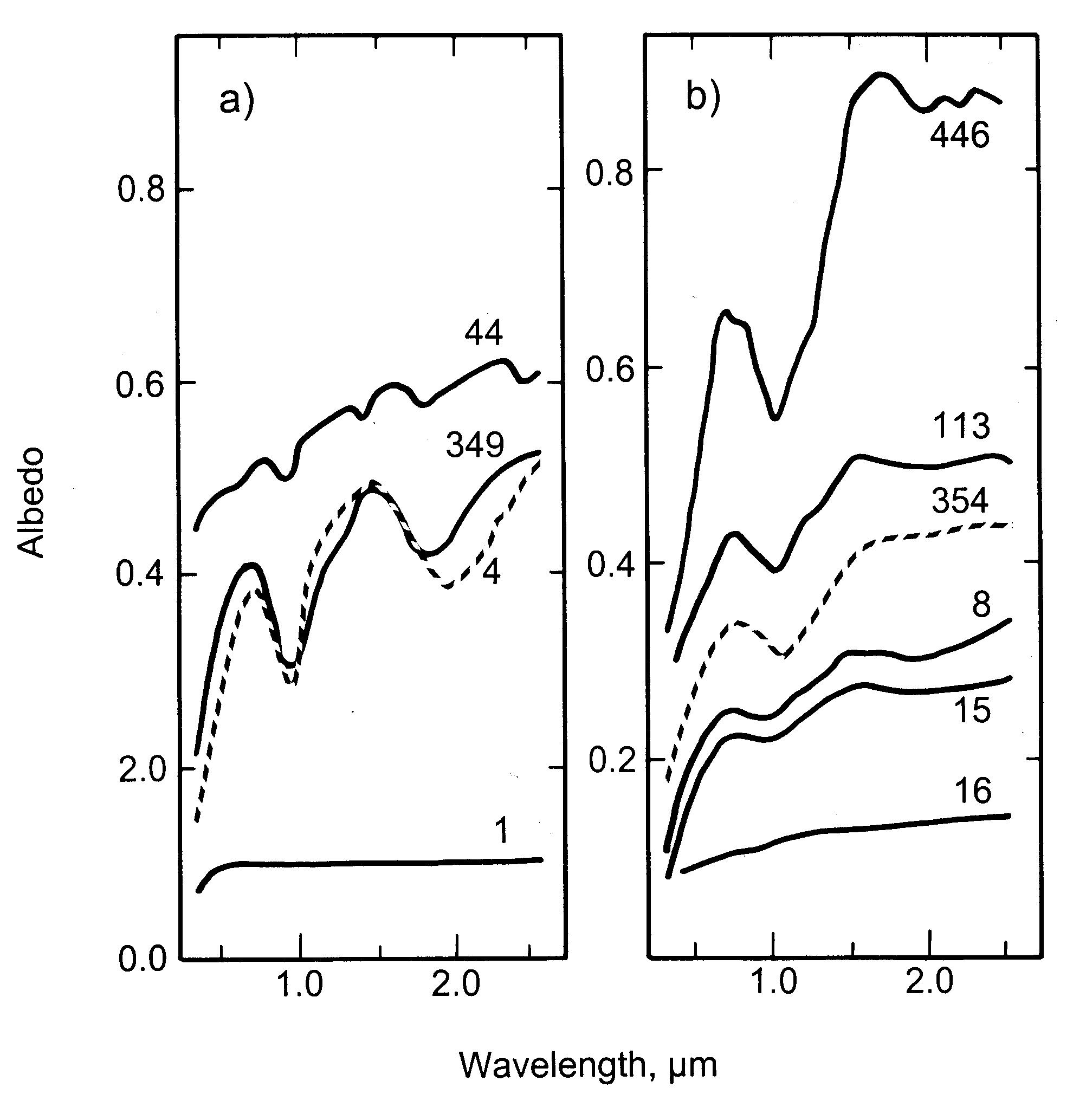 slide10 ==> 6.10: Reflection spectra of several bright asteroids, labelled by asteroid number.
slide10 ==> 6.10: Reflection spectra of several bright asteroids, labelled by asteroid number.
-
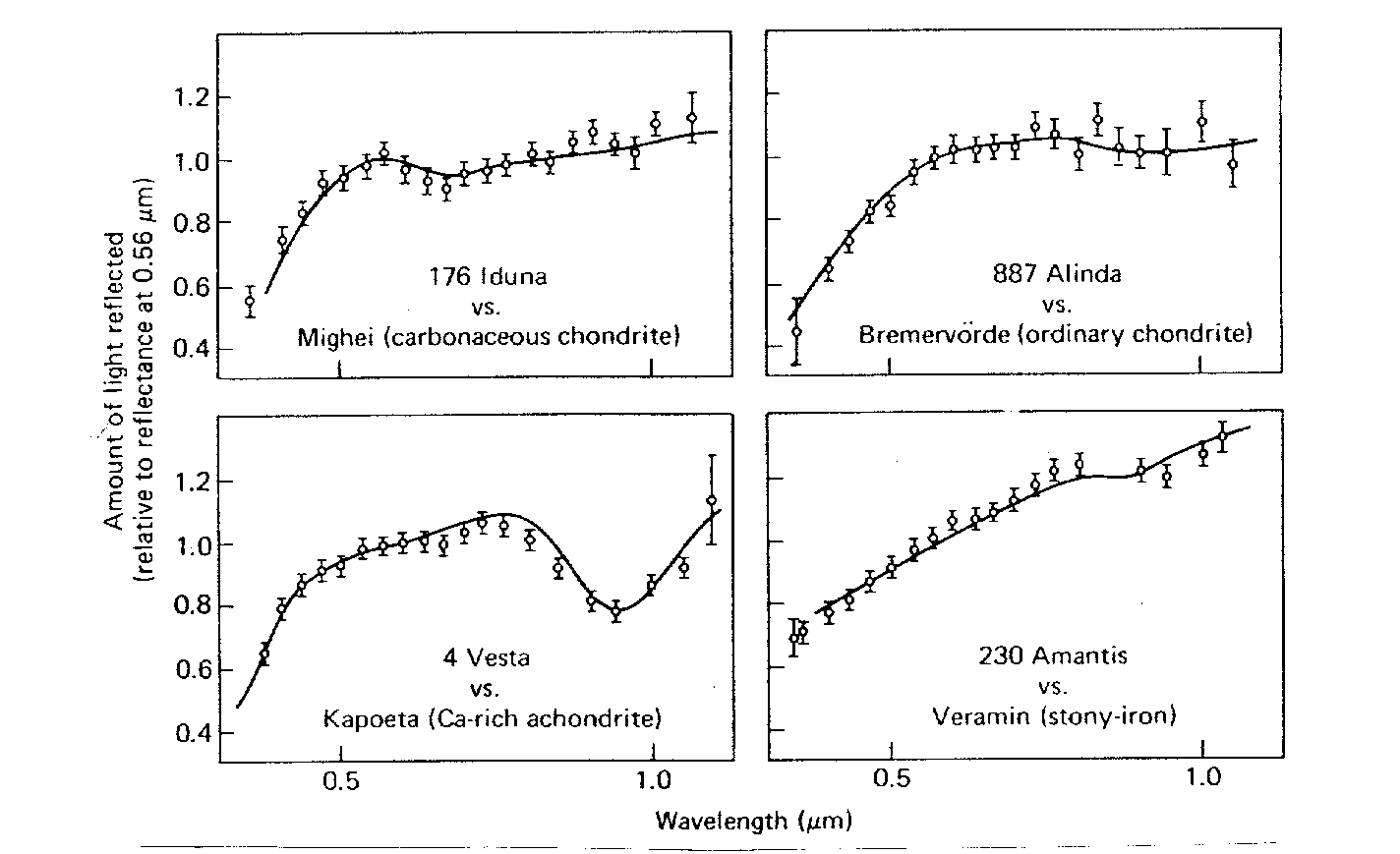 slide11 ==> 6.11: Comparison of reflection spectra of several asteroids to spectra of carbonaceous and ordinary chondritic meteorites.
slide11 ==> 6.11: Comparison of reflection spectra of several asteroids to spectra of carbonaceous and ordinary chondritic meteorites.
-
 slide12 ==> 6.12: Variation of relative numbers of three asteroid superclasses with distance from the Sun.
slide12 ==> 6.12: Variation of relative numbers of three asteroid superclasses with distance from the Sun.
-
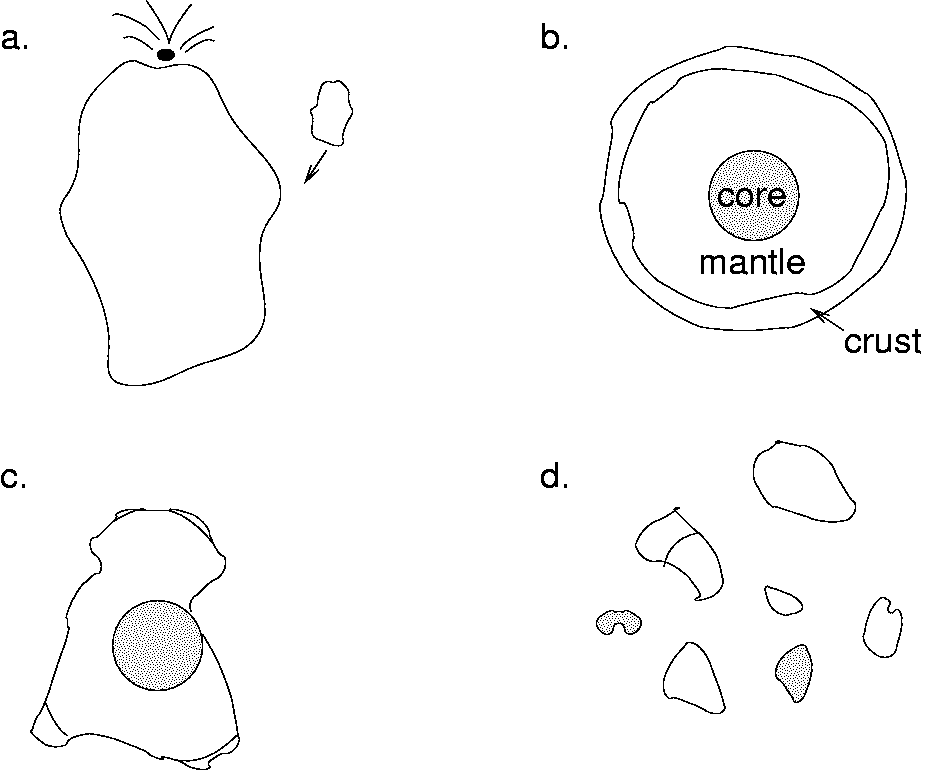 slide13 ==> 6.13: Evolution of an asteroid: a. formation, b. differentiated by heating, c. after some impacts, d. completely disrupted.
slide13 ==> 6.13: Evolution of an asteroid: a. formation, b. differentiated by heating, c. after some impacts, d. completely disrupted.
 slide1 ==> 6.1: Eccentricities of about 5000 asteroids as a function of orbital period. Note Kirkwood gaps.
slide1 ==> 6.1: Eccentricities of about 5000 asteroids as a function of orbital period. Note Kirkwood gaps.
 slide2 ==> 6.2: Numbers of asteroids with various orbital periods. Kirkwood gaps are again prominent.
slide2 ==> 6.2: Numbers of asteroids with various orbital periods. Kirkwood gaps are again prominent.
 slide3 ==> 6.3: Reflected and radiated energy from reflective (A = 0.20, top) and non-reflective (A=0.05, bottom) asteroids
slide3 ==> 6.3: Reflected and radiated energy from reflective (A = 0.20, top) and non-reflective (A=0.05, bottom) asteroids
 slide4 ==> 6.4: Asteroid Gaspra (19 x 12 x 11 km) as viewed from Galileo probe. Smallest visible features about 100 km across.
slide4 ==> 6.4: Asteroid Gaspra (19 x 12 x 11 km) as viewed from Galileo probe. Smallest visible features about 100 km across.
 slide5 ==> 6.5: Asteroid Mathilde (about 56 km across), showing its huge crater. The asteroid is a black as coal (A = 0.03).
slide5 ==> 6.5: Asteroid Mathilde (about 56 km across), showing its huge crater. The asteroid is a black as coal (A = 0.03).
 slide6 ==> 6.6: Asteroid Eros, an extremely non-spherical body about 30 km long, viewed from NEAR-SHOEMAKER
slide6 ==> 6.6: Asteroid Eros, an extremely non-spherical body about 30 km long, viewed from NEAR-SHOEMAKER
 slide7 ==> 6.7: Images as NEAR landed on asteroid Eros. Top two are about 500 m across, bottom about 250 m.
slide7 ==> 6.7: Images as NEAR landed on asteroid Eros. Top two are about 500 m across, bottom about 250 m.
 slide8 ==> 6.8: Two views of a rotating asteroid. Seen from the pole it varies little, but from the side big brightness changes are seen.
slide8 ==> 6.8: Two views of a rotating asteroid. Seen from the pole it varies little, but from the side big brightness changes are seen.
 slide9 ==> 6.9: Reflection spectra of a. NiFe, b. olivine, c. pyroxene, and d. anorthite.
slide9 ==> 6.9: Reflection spectra of a. NiFe, b. olivine, c. pyroxene, and d. anorthite.
 slide10 ==> 6.10: Reflection spectra of several bright asteroids, labelled by asteroid number.
slide10 ==> 6.10: Reflection spectra of several bright asteroids, labelled by asteroid number.
 slide11 ==> 6.11: Comparison of reflection spectra of several asteroids to spectra of carbonaceous and ordinary chondritic meteorites.
slide11 ==> 6.11: Comparison of reflection spectra of several asteroids to spectra of carbonaceous and ordinary chondritic meteorites.
 slide12 ==> 6.12: Variation of relative numbers of three asteroid superclasses with distance from the Sun.
slide12 ==> 6.12: Variation of relative numbers of three asteroid superclasses with distance from the Sun.
 slide13 ==> 6.13: Evolution of an asteroid: a. formation, b. differentiated by heating, c. after some impacts, d. completely disrupted.
slide13 ==> 6.13: Evolution of an asteroid: a. formation, b. differentiated by heating, c. after some impacts, d. completely disrupted.